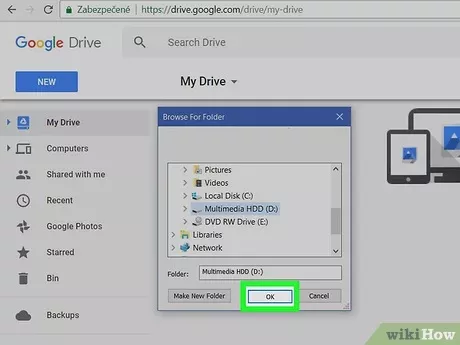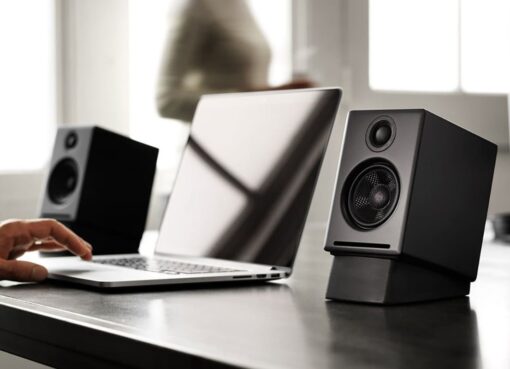In the digital landscape, where data rules the day, computer drives form the bedrock of our digital experience. These indispensable storage devices come in various shapes and sizes, each designed to cater to specific needs and applications. In this comprehensive guide, we’ll delve deep into the world of computer drives, exploring their types, and functions, and how to troubleshoot common issues that can occasionally disrupt our digital lives.
What is a Drives?
A drive, within the realm of computing, serves as the digital equivalent of the conventional file cabinet, allowing us to store and retrieve our digital assets with ease and efficiency. Without these electronic data repositories, modern computing as we know it would be unimaginable. Drives come in various forms, each with unique features and capabilities, ensuring they are suitable for a wide range of applications.
Types of Computer Drives
Computer drives are not a one-size-fits-all solution; they come in diverse forms to meet specific requirements. Here are some common types of computer drives:
1. Hard Drive (HDD)
– Definition: A Hard Drive, often referred to as an HDD, is a fixed, non-removable storage device that relies on spinning platters and read/write heads to store and retrieve data.
– Function: Hard drives are renowned for their reliability and cost-effectiveness. They are commonly used for long-term data storage, including operating systems and applications.
2. Solid-State Drive (SSD)
– Definition: Solid-state drives, or SSDs, are another variant of fixed drives. However, they operate differently, using flash memory without any moving parts.
– Function: SSDs offer a significant boost in data access speeds and improved durability compared to HDDs. As such, they are often used to enhance overall system performance.
3. Portable Drive and Removable Disk
– Definition: Portable drives are external storage devices that can be easily connected and disconnected from a computer. On the other hand, removable disks refer to storage media such as USB flash drives and memory cards.
– Function: These types of drives are prized for their portability and convenience, making them ideal for transferring data between different computers or creating backups of critical files.
Identifying Drives in Your Computer
To effectively manage your digital assets, it’s crucial to identify the drives your computer contains. Here’s how you can do that:
– My Computer (Windows) or Finder (Mac): These file management utilities provide a user-friendly interface that displays a comprehensive list of drives connected to your computer, complete with their names and available storage space.
– Device Manager (Windows) or System Information (Mac): These diagnostic tools offer in-depth insights into the hardware components of your computer, including detailed information about your drives.
Reading Data on a Drive
Accessing data on a drive is a fundamental skill for any computer user. Here’s a step-by-step guide on how to do it:
1. Open File Explorer (Windows) or Finder (Mac): To begin, launch the appropriate file management software on your computer.
2. Locate the Drive: In the navigation pane of your chosen software, you’ll find a list of drives connected to your computer. This list includes the drive names and the amount of available storage space.
3. Double-Click: To access the contents of a drive, simply double-click on its name. This action opens the drive, allowing you to peruse its contents.
4. Navigate Folders: If your drive contains folders, you can further explore its contents by opening these folders and subfolders.
5. Open Files: To open a file, double-click on its icon. If you have the necessary software installed on your computer, the file will open in its associated application.
Troubleshooting Drive Issues
As with any technology, drives may sometimes encounter issues that impede their functionality. Here are some common problems and their potential solutions:
1. Drive Not Opening
– Possible Causes: This issue can arise due to a corrupt file system, drive errors, or a loose connection between the drive and the computer.
– Solutions: Start by ensuring the drive is properly connected, then run a disk check utility such as ‘chkdsk’ on Windows. If the issues persist, you may need to consider formatting the drive, but this should be a last resort, as it will erase all data on the drive.
2. Data Not Accessible
– Possible Causes: Inaccessibility to data could be the result of file corruption, malware infection, or physical damage to the drive.
– Solutions: For data stored on a corrupt drive, consider using data recovery software to retrieve valuable files. If malware is suspected, run a comprehensive antivirus scan. In cases of physical damage, consult a professional technician for a thorough assessment and potential data recovery.
3. Slow Drive Performance
– Possible Causes: Slow drive performance may be attributed to factors such as fragmentation (for HDDs), insufficient free space, or excessive background processes.
– Solutions: If you’re using an HDD, consider defragmenting it to improve performance. Ensure that your drive has enough free space to operate efficiently, and close any unnecessary background applications that may be consuming system resources.
Conclusion
In summary, computer drives are the unsung heroes of the digital era, facilitating the storage and retrieval of data on a scale previously unimaginable. Whether you’re dealing with a fixed hard drive, a speedy SSD, or a portable external drive, understanding their types, functions, and how to troubleshoot common issues ensures a seamless and efficient digital experience. In an age where data is king, mastering the intricacies of these drives is the key to effective data management and harnessing the full potential of your computer.
Frequently Asked Questions
1. What is the difference between a Hard Drive (HDD) and a Solid-State Drive (SSD)?
– Answer: HDDs use spinning platters and moving read/write heads for data storage, while SSDs rely on flash memory without moving parts. SSDs offer faster performance and enhanced durability compared to HDDs.
2. How can I check the available storage space on my computer drives?
– Answer: You can check available storage space by opening “My Computer” (Windows) or “Finder” (Mac) and looking at the drive properties. Alternatively, you can right-click on the drive and select “Properties” (Windows) or “Get Info” (Mac).
3. What precautions should I take before formatting a drive?
– Answer: Before formatting a drive, ensure you’ve backed up all essential data, as formatting erases all content. Additionally, confirm that you’ve selected the correct drive to format to avoid accidental data loss.
4. Is it possible to recover data from a corrupted drive?
– Answer: Yes, data recovery software can help retrieve files from a corrupted drive. However, success depends on the extent of the corruption. For severe damage, professional data recovery services may be necessary.
5. Why is my external portable drive not recognized by my computer?
– Answer: There are several potential reasons for this issue, including a loose connection, a faulty cable, driver issues, or drive errors. Troubleshoot by checking connections, trying a different cable, and updating drivers as needed.
6. How can I optimize the performance of my Solid-State Drive (SSD)?
– Answer: To maximize SSD performance, avoid defragmentation (as SSDs don’t benefit from it), maintain adequate free space, and periodically update the SSD firmware and system drivers. These steps will help ensure your SSD operates at its best.
Also See: Understanding what is a tab.
- How Does Automated Scheduling Save Time and Boost Engagement? - April 16, 2025
- 21 Delicious High Protein Foods - May 31, 2024
- Black Seed Oil: Health and Beauty Benefits - May 30, 2024




